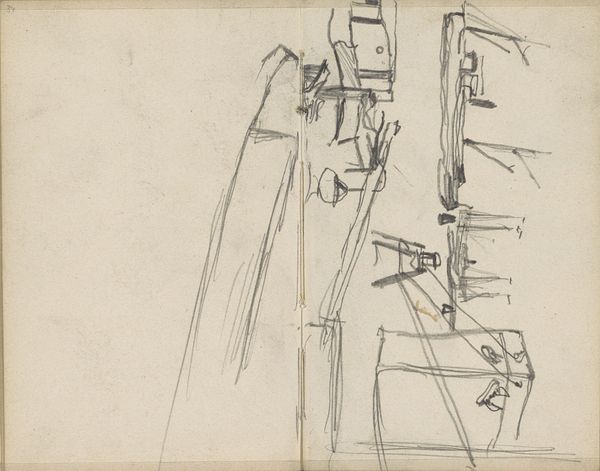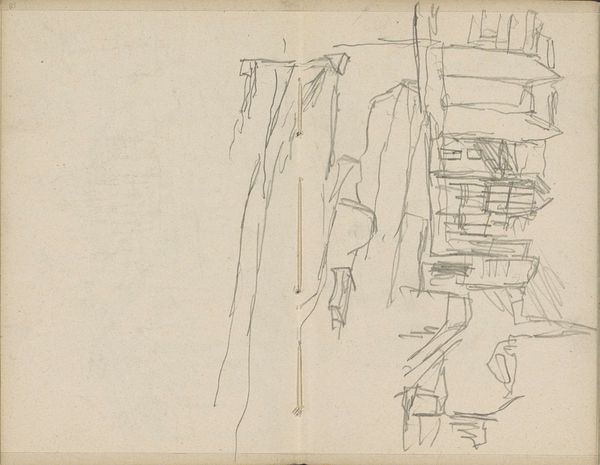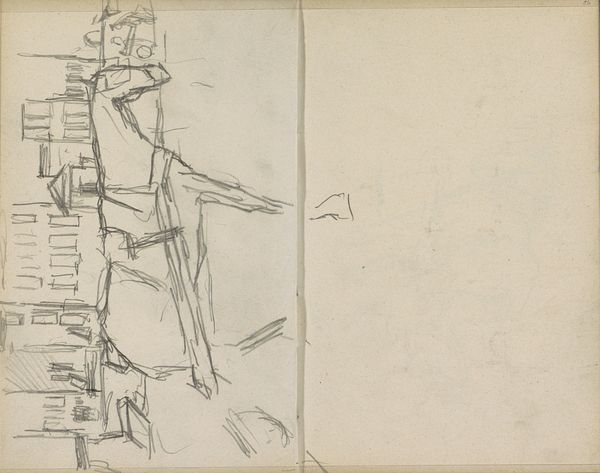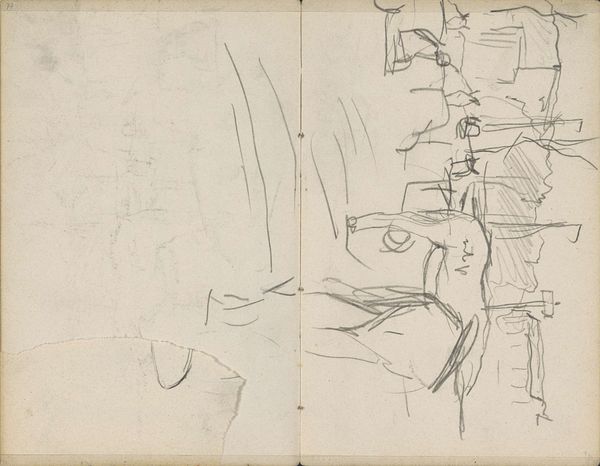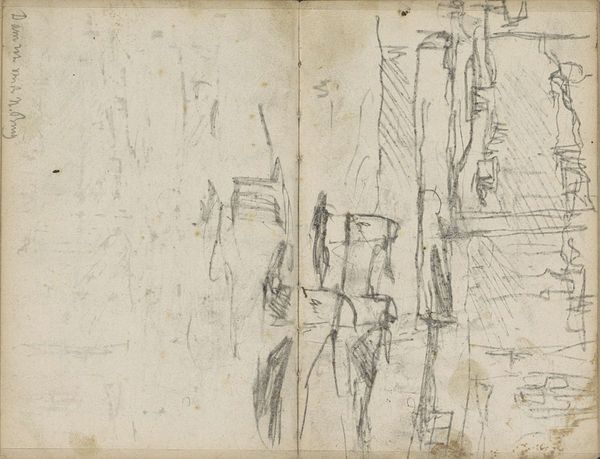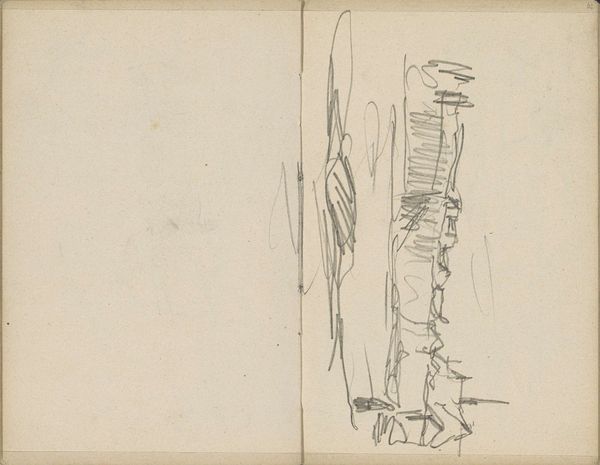
Copyright: Rijks Museum: Open Domain
Curator: Here we have a fascinating peek into the creative process of George Hendrik Breitner. This sketch, "Aangemeerde schepen," or "Moored Ships," dates from around 1903. It's a pen and pencil drawing on paper, part of a personal sketchbook, and currently held here at the Rijksmuseum. Editor: Oh, I love this! It’s like catching a secret glimpse. The frenetic lines, the unfinished quality—it's got a beautiful vulnerability. Makes me wonder what he was thinking that day. Curator: Well, situating this within Breitner's broader practice is key. He was, after all, deeply engaged with capturing the bustling, dynamic realities of urban life, particularly in Amsterdam. This sketch, with its depiction of docked ships, reflects that focus, echoing the labor and the movement inherent in maritime activity. Considering the socio-economic landscape of the time, this piece becomes a document of a working port, a site of intense exchange and potential exploitation. Editor: Absolutely! I see that now. The jumble of lines suddenly snaps into focus – it's not just a bunch of scribbles; it’s a shipyard, buzzing with activity. Still, it's like a dream you're struggling to remember. The shapes suggest more than they show, leaving plenty to the imagination. The lack of detail on the left side page seems also to bring our attention even more to the other page. Curator: Precisely. The sketchbook format offers a raw, unmediated look into the artist's initial observations. And by capturing these everyday scenes, Breitner challenges the prevailing academic hierarchy, prioritizing the ordinary experiences of working-class individuals. We must understand artmaking itself as work too. Editor: Right, like a snapshot from a bygone era…only sketched. There's something poignant about it, like holding a faded photograph that whispers stories you almost remember. What's striking is how this preliminary work seems to convey a stronger impression of industrial maritime activity that what a pristine perfectly polished art could. Curator: These initial gestures allow us to examine the artist’s own gaze but also to engage in dialogues about labor, trade, and the representation of marginalized communities during the turn of the century. Editor: It's rough, yes, but honest. The immediacy of it really draws you in, invites you to complete the story for yourself. Thanks for the perspective—makes me see it in a completely different light. Curator: And it's through these conversations that we truly understand art as not just a visual object, but as an ongoing cultural dialogue.
Comments
No comments
Be the first to comment and join the conversation on the ultimate creative platform.
